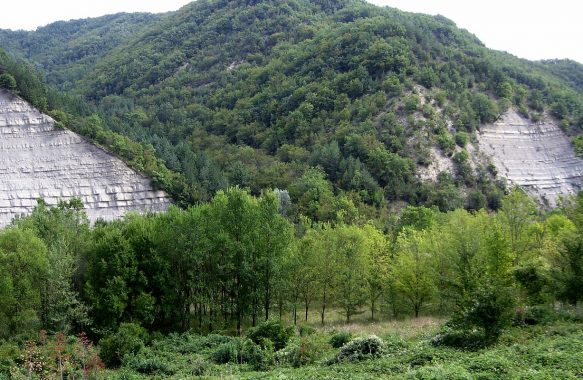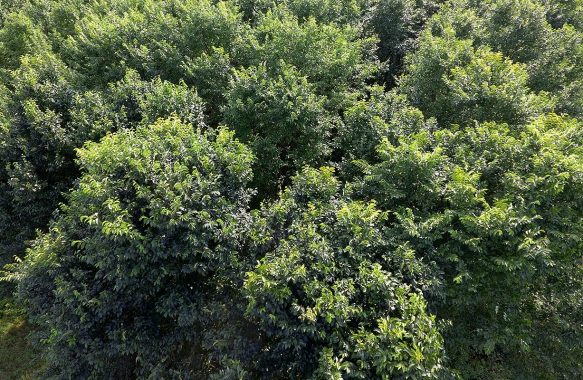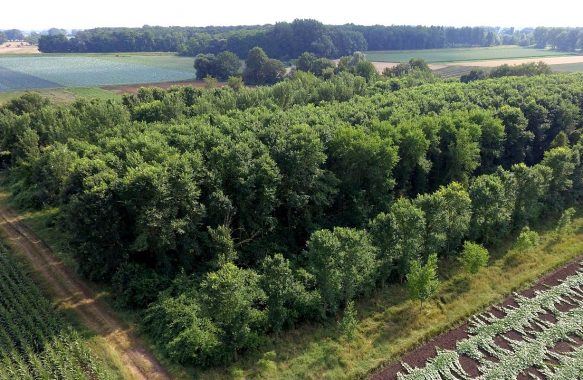Versatile Potential
So far elms seem to play an inferior role in forestry. But there are some arguments for more elms: Elms are much faster growing than many other species. Elms dispose of high quality wood for furniture. Elm wood was used for ship building and foundations of Venice and the Rialto bridge resist decay since more than 400 years. Other broad leaf tree species and also conifers fight diseases but do not dispose of bred varieties against. And elms seem to have a good potential to cope with climatic changes.
Since the middle of the last century elms created by scientists had been planted successfully in parks, along streets in cities and the countryside. Some had been planted in hedge rows (especially Western France), and very small numbers in forests with modest success.
R E A D M O R E >
Elms in Forest and Landscape
What were the reasons ?
- These varieties are clones, reproduced vegetatively and therefore without genetic variability.
- All these varieties contain at least one parent coming from Asia and thus do not seem to fit to the indigenous fauna.
- These elms are propagated by cuttings and offered at the age ot two years at prices much above the price for other forest plants created by seeds.
I want to discuss these three points in detail.
1. Genetic variability
Each tree is genetically distinct. Any offspring created vegetatively is genetically the same. Any offspring by seed normally is genetically different. Prof. Eugene B.Smalley, one of the most famous elm breeders once said to me „it is my dream that my babies by free crossing with indigenous elms help to bring new generations of elm into the woods which are able to cope with Dutch Elm disease“. It seems that this dream is coming true: Many elms already are growing of which one parent is one of the new elm varieties whereas the origin of the pollen is unknown. In tests 2008 – 2010 they proved to be highly resistant against Durch Elm Disease.
2. Native trees
This notion is becoming quite ambiguous, especially with regard to trees which have many years, sometimes centuries, to live. It certainly is very important that trees in our forests must fit into their environment. It is very important that the fauna and especially the insects are happy with the trees they are supposed to live on. All elms planted have to be accepted by more than 40 different kinds of insects which are specific to this tree species. In 1995 the Director of forests Kettering of Bellheim Germany found the elm-leaf beetle (Xanthogaleruca luteola) on a ’Sapporo Autumn Gold’. This is remarkable because this very delicate beetle was thought to be monophag on Ulmus carpinifolia (minor). In 1993 the Hessische Forstliche Versuchsanstalt held a Symposium with the title „Is the rescue of the Elm possible“. One of the results was that elm breeding is the answer and here the forest scientists asked to plant such elms. If the elm bark beetle (Scolytus scolytus), responsible for transmitting the disease cannot find any elm it will die out. In Slovakia this insect had to be put on the „Red List“. The new elm varieties therefore are perfect hosts for the fauna.
But this notion has become ambiguous also because of the rapid climatic changes we expect for the next 50 to 100 years. The speed of change will make it impossible for most tree species to adapt because within this short period of time only two or three generations of trees are possible. This makes a fundamental difference to annual plants which have a good chance to adapt. A native tree to England today most certainly will not feel at home in the year 2080. We therefore must think of planting non-native trees to-day if we care for healthy and vital forests when our grand children are grown up.
3. Price
The price of a tree to be planted has to be seen in relation to the rapidity of growth, the quality and quantity of the wood and the price obtainable.
With some of the Resista varieties we already have good examples of the rapidity of growth: We have quite number of trees of three different varieties which now have a circumference of 140 cm and more at the age of 25 yeas.
The quality of elm wood in general is exceptionally good; it is suitable for tools, wheels and especially furniture (beautiful color and grain). Also outside it is very useful when it is constantly under water – for boats, water mills or bridges. In Venice/Italy the foundation of the Rialto bridge with 12.000 elm logs after many hundred years is still in in place.
Another argument may not fail: The fate of the elm seems to be followed by other tree species: Ash, Oak, Chestnut, Plane and other species of our indigenous trees apparently are getting serious problems to cope to diseases which probably is due to climatic and environmental changes. To get resistant varieties of these species will need 40 years and more. GMO techniques would not help to shorten this time by more than maximum 4 years.
by C H R I S T O P H E I S E L E / D E C E M B E R 2 0 1 6



